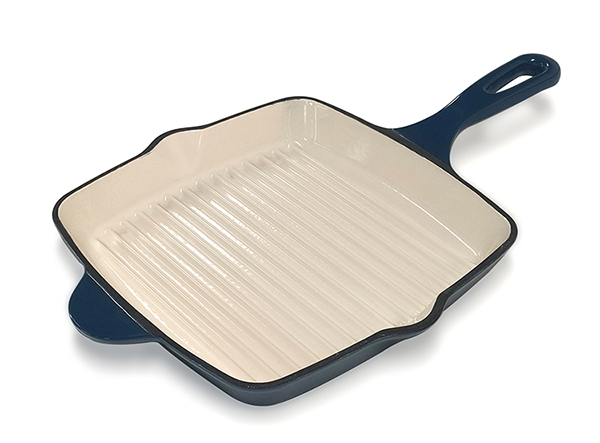All About Cast Iron Cookware
Cast Iron Cookware are traditional types of cookware used in every kitchen around the world. Durable, inexpensive, and with great heat retention properties, cast iron cookware is a tried-and-true favorite among chefs of all levels.
There are plenty of benefits to cooking with cast iron cookware - but what are the downsides? We've compiled some pros and cons of cooking with cast iron below to help you decide whether this type of cookware is best for your needs.

Cast Iron Pros & Cons:
*Cast Iron Cookware offers even heating without hot spots that can burn food.
*Cast Iron Cookware heats slowly, which is great for cooking meat slowly without causing it to dry out.
*Cast Iron Cookware heats evenly on the stovetop and can be moved from stovetop to oven to table with ease.
*Cast Iron Cookware needs to be seasoned before use; this process creates a natural, non-stick cooking surface that is incredibly durable.
*Cast Iron Cookware weighs more than other types of cookware, which makes it feel like you are getting more bang for your buck.
*Cast Iron Cookware does not conduct heat energy efficiently, which means that food can take longer to cook.
*Cast Iron Cookware needs to be preheated before use. This can be a pain if you are in a rush or if you forget to do it.
*Cast Iron Cookware is not suitable for cooking foods with high acid content, such as tomatoes and citrus fruits.
*Cast Iron Cookware can rust over time, which can be a maintenance issue.
*Cast Iron Cookware can have a few dings on them, which are not always considered aesthetically pleasing.
Cast Iron Cookware is made up of a number of different types of iron, each with a different characteristic. While many people assume that cast iron cookware is just made of a single type of iron, the fact is that there are a number of iron alloys used in making cast iron cookware.
The main thing to note is that the varieties within cast iron are based on purity. The more pure the Iron, the less reactive it is to tin and lead, chemicals commonly found in most non-cast iron pans.
In addition to purity, there are other factors that contribute to the final composition of cast iron cookware as well as its melting point. The different types of cast iron cookware also have different levels of density, porosity, and thermal conductivity. Because each type is made up of a different combination of iron alloys and purer Iron, these factors vary from type to type.
Indian recipes using cast iron cookware include slow cooker curries, breads, and stews. On an average the percentage of cast iron cookware in Indian households ranges somewhere between 30 to 60 percent. Food cooked in cast iron cookware tends to be well-cooked and less oily, which makes it a great choice for Indian cuisine.Cast Iron Cookware can also be safely used on gas or electric griddles, which makes it easy to use in your kitchen whether you are cooking Indian food or not.
*Handles should be regularly cleaned to avoid sticking and rust.
Small fire spots that form on the surface of the cookware can easily be taken care of by using a hot water and vinegar solution or by scraping the surface with a scouring pad.
Grease buildup can be cleaned away easily with baking soda solution sprinkled over the affected area for 5 minutes.
The Dont's of a cast iron cookware are:
*Do not leave a cooking surface in direct sunlight, as this can cause rust spots and discoloration.
*Do not put salt onto the surface of the cookware. When seasoning a cast iron pan, do it over medium heat, then reduce to low heat after seasoning is complete.
Hot pans should be allowed to cool before removing from the stovetop.
Do not scrape the cooking surface with metal scrubbers or steel pads.
You can remove stuck-on food from the cooking surface by using a paste made of equal parts of baking soda and water.
*Do not use a container with a metal lid on a cast iron cookware, as the lid can react with the cookware.
Cast iron cookware is not recommended for cooking acidic foods since it will react with these foods producing bad results such as discoloration and significant loss in metal content. Other components of the food can also cause discoloration in the cast iron.
Common mistakes while cooking in a cast iron cookware are :
* Cooking on high burner without a heat diffuser.
* Cooking greasy food.
* Not letting the pan cool down properly before cleaning it.
* Soaking in water for a long time.
After cooking, storing cast iron cookware in a dry place is important. Cast iron cookware should not be placed in a dishwasher. The reason why cast iron cookware must not be placed in a dishwasher is because the detergents used in a dishwasher can harm and deteriorate the seasoning on your cookware. It is also important to store cast iron in a dry place because moisture can cause rusting.
This article focuses on cast iron cookware in terms of considerations, advantages and disadvantages, if you want to learn more about it, you can click here.

评论
发表评论